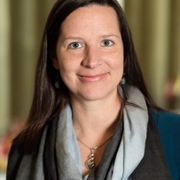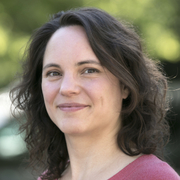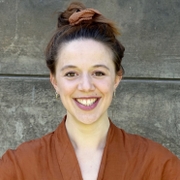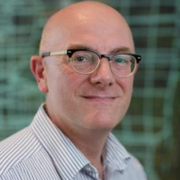- Level Foundation
- Duration 19 hours
- Course by Lund University
-
Offered by

About
This course looks at where important materials in products we use every day come from and how these materials can be used more efficiently, longer, and in closed loops. This is the aim of the Circular Economy, but it doesn’t happen on its own. It is the result of choices and strategies by suppliers, designers, businesses, policymakers and all of us as consumers. In addition to providing many cases of managing materials for sustainability, the course also teaches skills and tools for analyzing circular business models and promotes development of your own ideas to become more involved in the transition to a Circular Economy. You will learn from expert researchers and practitioners from around Europe as they explain core elements and challenges in the transition to a circular economy over the course of 5 modules: Module 1: Materials. This module explores where materials come from, and builds a rationale for why society needs more circularity. Module 2: Circular Business Models. In this module circular business models are explored in-depth and a range of ways for business to create economic and social value are discussed. Module 3: Circular Design, Innovation and Assessment. This module presents topics like functional materials and eco-design as well as methods to assess environmental impacts. Module 4: Policies and Networks. This module explores the role of governments and networks and how policies and sharing best practices can enable the circular economy. Module 5: Circular Societies. This module examines new norms, forms of engagement, social systems, and institutions, needed by the circular economy and how we, as individuals, can help society become more circular. This course is brought to you by: LUND UNIVERSITY INTERNATIONAL INSTITUTE FOR INDUSTRIAL ENVIRONMENTAL ECONOMICS (IIIEE) EIT RAWMATERIALS VITO GEOLOGICAL SURVEY OF DENMARK AND GREENLAND NATIONAL TECHNICAL UNIVERSITY OF ATHENS GHENT UNIVERSITY DELFT UNIVERSITY OF TECHNOLOGYModules
About This Course
4
Readings
- Welcome to the Course - Start Here!
- Grading
- Course Assignment - Circular Business Model Analysis
- Course Readings
Lesson W1:1 Introduction to the Course
1
Discussions
- Why Study Circular Economy?
4
Videos
- Introduction to the Circular Economy - Part I
- Introduction to the Circular Economy - Part II
- Introduction to the Circular Economy - Part III
- Introduction to the Circular Economy - Part IV
Lesson W1:2 What is Mining?
3
Videos
- What is Mining? - Part I
- What is Mining? - Part II
- What is Mining? - Part III
3
Readings
- Historical Aspects of Mining
- Exploration and Extraction
- The Footprint of Mining
Lesson W1:3 Sustainable Mining
3
Videos
- Sustainable Mining - Part I
- Sustainable Mining - Part II
- Sustainable Mining - Part III
4
Readings
- Sustainable Mining - Part I
- Sustainable Mining - Part II - Progress Towards Sustainable Mining Practice
- Environmental Constraints
- Managing a Mine-site From Before Mining Until After Mining
Lesson W1:4: From Mining to Metal
3
Videos
- From Mining to Metal - Part I
- From Mining to Metal - Part II
- From Mining to Metal Part - III
2
Readings
- From Ore to Metal
- How is Aluminium Made?
Lesson W1:5 Value and Governance
2
Videos
- Value and Governance - Part I
- Value and Governance - Part II
2
Readings
- Global Value Chains
- Research on Value and Governance (Extension)
Lesson W1:6 Criticality
1
Videos
- Criticality
1
Readings
- Criticality
Lesson W1:7 Transition to Circular Economy
2
Videos
- How Do We Transition to Circular Economy? - Part I
- How Do We Transition to Circular Economy? - Part II
2
Readings
- Linear to Circular Product Chains
- Increasing Circularity
Week 1: Follow Your Phone
1
Videos
- Follow Your Phone - Part I
1
Readings
- Elements in a Smartphone
Week 1: Case Studies
6
Videos
- Euromines - Pursuing Responsible Mining to Support Global Development
- Aluminium - From Mine to Metal - Mining
- Aluminium - From Mine to Metal - Alumina Production
- Aluminium - From Mine to Metal - Smelting
- Aluminium - From Mine to Metal - Casting
- Aluminium - From Mine to Metal - Handling the Residue
Week 1: Assessment
1
Assignment
- Module 1
Lesson W2:1 The Role of Business in the Circular Economy
2
Videos
- The Role of Business in the Circular Economy - Part I
- The Role of Business in the Circular Economy - Part II
2
Readings
- Slowing, Closing, Narrowing
- The Role of Business in the Circular Economy (Extension)
Lesson W2:2 Circular Economy Business Model Strategies
2
Videos
- Circular Economy Business Model Strategies - Part I
- Circular Economy Business Model Strategies - Part II
4
Readings
- Circular Business Models
- Circular Strategies and the Business Model Canvas
- The Importance of a Circular Value Network - An Example
- The Role of Products-as-a-Service in the Circular Economy
Lesson W2:3 Business Model Innovation
1
Discussions
- Examples of Circular Business Models
2
Videos
- Business Model Innovation - Part I
- Business Model Innovation - Part II
1
Readings
- Circular Business Model Planning Tool
Lesson W2:4 Drivers for Entrepreneurship in a Circular Economy
1
Videos
- Drivers for Entrepreneurship in a Circular Economy
1
Readings
- The PESTEL Framework
Lesson W2:5 Barriers for Businesses in a Circular Economy
1
Videos
- Barriers for Businesses in a Circular Economy
1
Readings
- Drivers and Barriers for Businesses in a Circular Economy
Week 2: Follow Your Phone
1
Videos
- Follow Your Phone - Part II
Week 2: Case Studies
4
Videos
- ING Bank - Finance and Accounting in a Circular Economy
- ING Bank - Business Opportunities for a Circular Economy
- Accus - Entrepreneur Spotlight
- NNOF - Entrepreneur Spotlight
Week 2: Skillbuilder
2
Videos
- Skillbuilder - Introduction
- Skillbuilder - Analysis and Application of Analytical Tools
Week 2: Assignment - Circular Business Model, Part A
1
Peer Review
- Part A: Circular Business Model Analysis
4
Readings
- Overall Assignment Description
- Circular Business Model Planning Tool - A Guide
- Case Company Description
- Copy of Overall Assignment Description
Week 2: Assessment
1
Assignment
- Week 2
Lesson W3:1 Material Science Innovations
1
Videos
- Material Science Innovations
Lesson W3:2 Ecodesign Strategies
1
Discussions
- Using Ecodesign Strategies
1
Videos
- Ecodesign Strategies
Lesson W3:3 Nanotech Developments
3
Videos
- Nanotech Developments - Part I
- Nanotech Developments - Part II
- Nanotech Developments - Part III
3
Readings
- Introduction to Nanotechnology
- The Scale of Nano
- Mimicking Nano in Nature
Lesson W3:4 Assessing the Environmental Sustainability of Circular Systems: Tools and Methods
2
Videos
- Assessing the Environmental Sustainability of Circular Systems: Tools and Methods - Part I
- Assessing the Environmental Sustainability of Circular Systems: Tools and Methods - Part II
3
Readings
- What is LCA?
- Limitations to LCA
- LCA Challenges: Recycling and Multi-functionality (Extension)
Lesson W3:5 Assessing the Resource Efficiency of Circular Systems
3
Videos
- Assessing the Resource Efficiency of Circular Systems - Part I
- Assessing the Resource Efficiency of Circular Systems - Part II
- Assessing the Resource Efficiency of Circular Systems - Part III
2
Readings
- Resource Efficiency Indicators at the Macro Level: The European Union
- Methods Available to Quantify Resources (Extension)
Week 3: Follow Your Phone
1
Videos
- Follow Your Phone - Part III
Week 3: Case Studies
3
Videos
- Umicore- Innovations in Recovery of Metals
- Swerea IVF - Innovations for Extending the Useful Life of Textiles
- Ragn-Sells - From Waste to Resources
1
Readings
- KeepCup - designing for circularity and assessing benefits
Week 3 Skillbuilder
1
Videos
- Skillbuilder - Critical Thinking and Assessment
Week 3: Assignment - Circular Business Model, Part B
1
Peer Review
- Part B - Critical Assessment of a Circular Business Model
Week 3: Assessment
1
Assignment
- Week 3
Lesson W4:1 The Historical Perspective
1
Discussions
- Learning From History?
2
Videos
- Past Policy Solutions
- From Waste to Materials
1
Readings
- From Waste to Materials - Summary
Lesson W4:2 Policies for a Circular Economy
3
Videos
- Overview of Policies for a Circular Economy - Part I
- Overview of Policies for a Circular Economy - Part II
- Overview of Policies for a Circular Economy - Part III
2
Readings
- EU and Circular Economy
- Policy Instruments to Improve Product Circularity
Lesson W4:3 Extended Producer Responsibility
3
Videos
- Extended Producer Responsibility - Part I
- Extended Producer Responsibility - Part II
- Extended Producer Responsibility - Part III
1
Readings
- EPR for Mobile Phones (Extension)
Lesson W4:4 Ecodesign Policies
2
Videos
- Policies for Extended Product Lifetimes
- EU Ecodesign Directive
2
Readings
- Overview of Policies for Ecodesign and Circular Economy
- Advantages and Disadvantages of Ecodesign Policy Strategies
Lesson W4:5 Policy Outlook
1
Videos
- Policies and Outlook in The Netherlands
Lesson W4:6 Networks and Information Sharing
1
Videos
- Importance of Networks for Sharing Information
1
Readings
- Other Examples of Initiatives to Stimulate Circular Economy via Information Sharing and Networking (Extension)
Week 4: Follow Your Phone
1
Videos
- Follow Your Phone - Part IV
Week 4: Case Studies
1
Videos
- OVAM - Policy and the Circular Economy in Flanders
Week 4: Skillbuilder
1
Videos
- Skillbuilder - Context Analysis and Idea Development
Week 4: Assignment - Circular Business Model, Part C
1
Peer Review
- Part C - Upscaling Circular Business Models
Week 4: Assessment
1
Assignment
- Week 4
Lesson W5:1 Circularity's Value to Society
3
Videos
- Circularity's Value to Society - Part I
- Circularity's Value to Society - Part II
- Circularity's Value to Society - Part III
1
Readings
- Circularity Value - Summarising Key Points
Lesson W5:2 Environmental Impacts of Consumption
2
Videos
- Environmental Impacts of Consumption - Part I
- Environmental Impacts of Consumption - Part II
2
Readings
- Our Environmental Footprint
- Sustainable Consumption in a Circular Economy
Lesson W5:3 The Global View
4
Videos
- The Global View - Part I
- The Global View - Part II
- The Global View - Part III
- The Global View - Part IV
Lesson W5:4 Who Owns It?
2
Videos
- Who Owns It? - Part I
- Who Owns It? - Part II
1
Readings
- Remanufacturing / Repairing and Property Rights - Extension
Lesson W5:5 The Local View
3
Videos
- The Local View - Part I
- The Local View - Part II
- The Local View - Part III
2
Readings
- Example of How Sharing Contributes to a Circular Society
- Example of How Repairing Contributes to a Circular Society
Week 5: Follow Your Phone
1
Videos
- Follow Your Phone - Part V
Week 5: Case Studies
2
Videos
- Electronicsmix - Entrepreneur Spotlight, Local Repair
- Fablabs - Creating Sustainable Communities
Week 5: Skillbuilder
1
Discussions
- What Are Your Ideas?
1
Videos
- Skillbuilder - Pitching Innovative Ideas
Week 5: Assessment
1
Assignment
- Week 5
Auto Summary
Explore the Circular Economy and Sustainable Materials Management through an engaging course offered by Coursera. This foundational course, guided by expert researchers and practitioners from top European institutions, delves into the efficient, long-term use of materials in a closed-loop system. Spanning 5 modules, you'll learn about material origins, circular business models, eco-design, policy roles, and societal engagement. Ideal for those interested in science and engineering, it provides skills and tools to analyze and develop circular economy strategies. Available with a Starter subscription, the course runs for 1140 minutes.

Philip Peck

Jessika Luth Richter

Karl Vrancken

Saskia Manshoven

Jeroen Gillabel

Erika Faigen

Konstantinos Modis

Sophie Sfez

Julia Nußholz

Katherine Whalen

David Peck

Dr. Yuliya Voytenko Palgan

